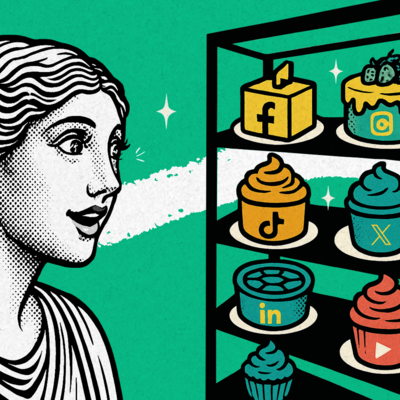
Was this newsletter forwarded to you? Sign up to get it in your inbox.
When OpenAI makes an announcement, it often knocks our socks off. But 12 hours after the ChatGPT maker’s latest release, our socks, oddly, remain very much attached to our feet. So, by historical standards, yesterday’s release was relatively modest compared to, say, last year’s GPT-4 launch.
Still, some of the new features are sneakily exciting. More importantly, they tell us a lot about OpenAI’s product strategy and roadmap: knock the socks off the average consumer, for free.
Yesterday, the company announced three new things:
- GPT-4o, a large language model that can process video, audio, and text all at once
- A desktop app (coming first to Macs—sorry, Microsoft)
- API access to GPT-4o that is two times faster, 50 percent cheaper, and has five times higher rate limits than its previous version
I (Dan) am going to explain what it all means from a strategic, technical, and consumer perspective. Then Evan will wrap it up with what it means for the enterprise.
OpenAI’s consumer product strategy
In one sentence: OpenAI just released a model that is better, faster, and free.
GPT-4o is not a huge leap forward in terms of intelligence—it seems to be slightly above the level of GPT-4 Turbo for capabilities like knowledge, reasoning, and comprehension—but it’s the most user-friendly model the company has ever released, and it’s available to everyone at no charge.
OpenAI is already the dominant destination chatbot, and these features are aimed at maintaining its position. It’s running the classic Silicon Valley playbook: (1) Release great technology, (2) raise lots of money to make that technology as cheap as possible, and (3) get as much distribution as you can, as quickly as you can. In the long run, OpenAI wants to make sure that ChatGPT continues to be synonymous with this generation of AI products, while it keeps pushing the limits of what the technology can do.
With this strategy, OpenAI doesn’t necessarily need to push the technical frontier with every release. GPT-4 is already intelligent enough for most everyday consumer use cases—but it used to cost $20 a month. For most AI users, who were previously using the free ChatGPT 3.5, the move to GPT-4o will be a big upgrade. ChatGPT currently has more than 100 million monthly active users. If we assume only 5 percent of those are paid, more than 95 million people just upgraded to the best model they’ve ever used.
It’s a leap in intelligence comparable to the one that most AI enthusiasts experienced a year ago with GPT-4. That’s going to make a world of difference...
Subscribe to Every to read the rest:
- Why GPT-4o is technically interesting
- The importance of the OpenAI desktop app
- GPT-4o as a path to enterprise contracts
- ChatGPT as the meta-layer atop all your applications
The Only Subscription
You Need to
Stay at the
Edge of AI
The essential toolkit for those shaping the future
"This might be the best value you
can get from an AI subscription."
- Jay S.
Join 100,000+ leaders, builders, and innovators

Email address
Already have an account? Sign in
What is included in a subscription?
Daily insights from AI pioneers + early access to powerful AI tools






.png)

